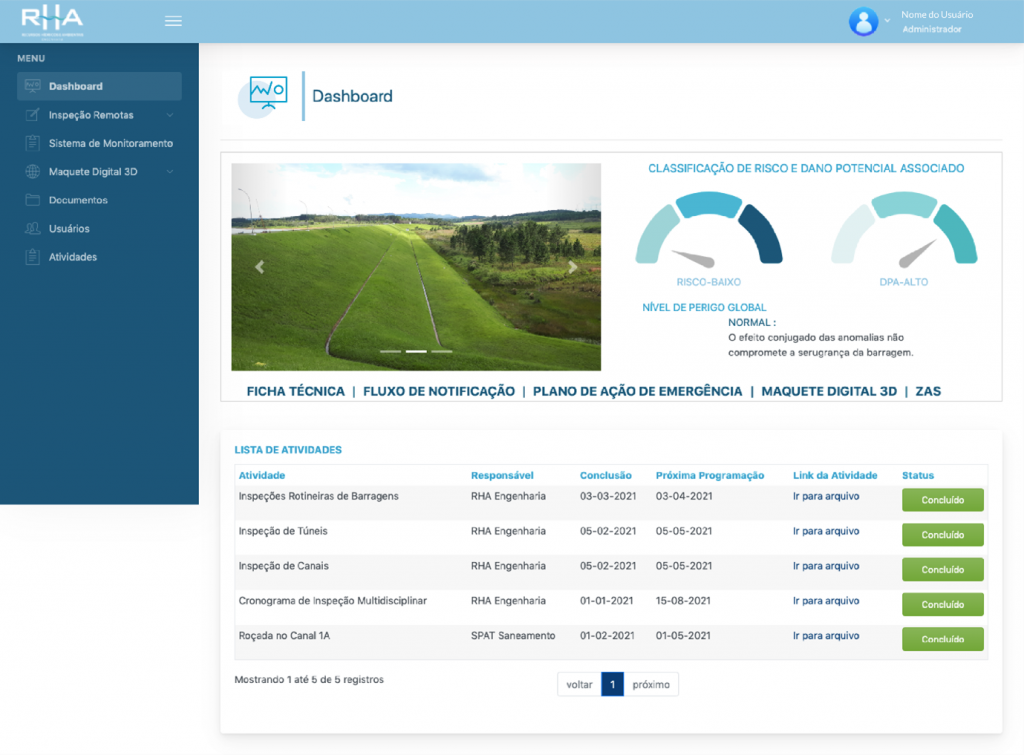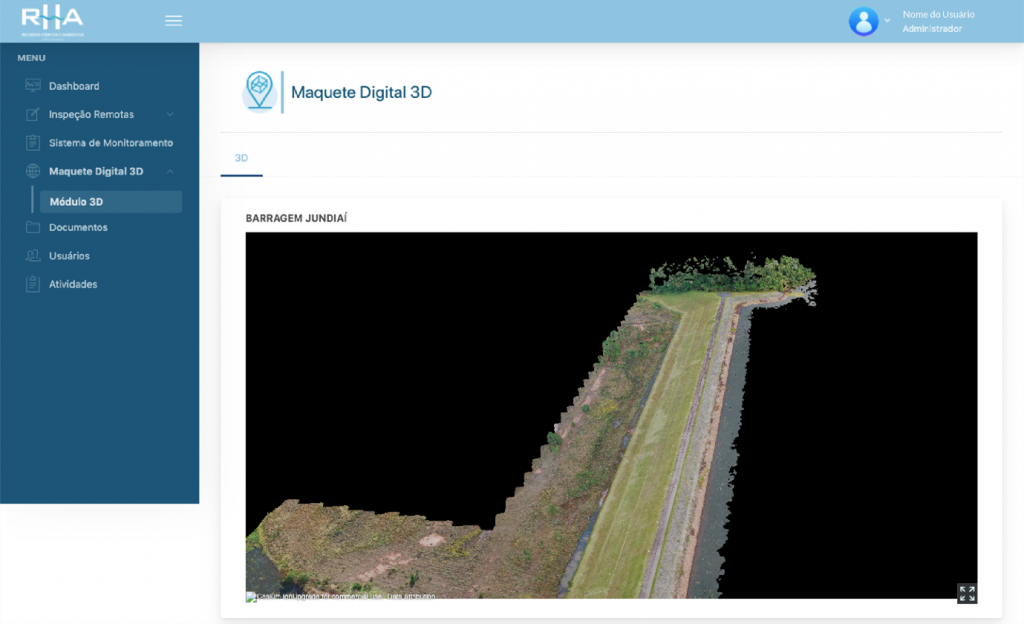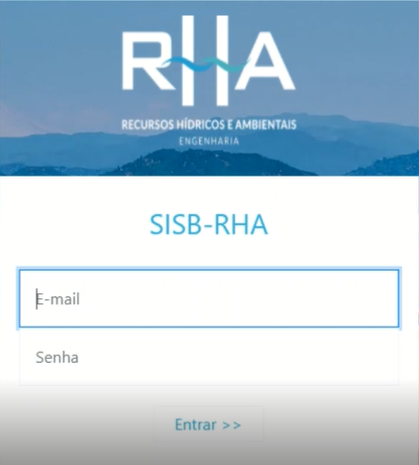INTEGRATED DAM SAFETY SYSTEM (SISB – RHA)
May 8, 2023INTEGRATED DAM SAFETY SYSTEM (SISB – RHA)
DAM MANAGEMENT AND MONITORING SOFTWARE
SUMMARY
The Law 12.334 of 2010, responsible for the National Dam Safety Policy (PNSB), allowed creating a legal framework for the safety of Brazilian dams, providing devices for application thereof. Ten years after being regulated, Law 12.334 was updated through Law 14.066 of 2020. The Federal Waters and Basic Sanitation Agency (ANA) has been, throughout this time, identifying the precarious situation in terms of monitoring and safety in a large part of water reservation dams for non-hydroelectric use.
RHA Engenharia, operating in the sector for over 20 years in the preparation of Plans, Monitoring and Safety Inspections of small, medium and large-size Dams all over the national territory, has developed an auxiliary management tool according to the needs of its clients. The experience acquired by the Company in over 200 public and private dams in various industries – generation of electric power, mining, supply and irrigation – allowed the development of the Integrated Dam Safety System (SISB-RHA), ensuring the conformity of the projects to legislation on the books.
SISB-RHA allows entrepreneurs to implement the National Dam Safety Policy, meeting the requirements of Law with a holistic view integrating Owner, Oversight Agencies, Civil Defense and the Community.
SISB-RHA was developed with information stored in cloud-based technology, allowing remote access and modular development with React.JS, a responsive language derived from Java Script.
INTEGRATED DAM SAFETY SYSTEM
Dam safety management requires, in addition to conformity of the instruments presented by the National Dam Safety Policy, a view on safety as a continued process, which must be incorporated on the day-to-day of entrepreneurs, irrespective of size or number of dams under their responsibility.
The instruments presented by the National Dam Safety Policy allow assessing the integrity of each dam and the associated structures. Based on this information, preventive and/or predictive measures must be established. However, the development of these activities requires data to be frequently updated, analyzed and made available for making decisions. But, only the implementation of an integrated management system allows for prompt and permanent monitoring of the state of the project.
For developing the SISB, RHA Engenharia defined technologies that are sufficiently adaptable to the needs of the most varied types of entrepreneurs in Brazil. The Integrated Dam Safety System was developed with information stored in cloud-based technology, allowing remote access, modular development with React.JS, a responsive language derived from Java Script. System security, for handling sensitive information, was designed through encrypted data, and for allowing higher system adaptation, the system can be hosted in the entrepreneur’s own server.
The development of the system presents a modular concept and allows for new modules to be integrated to the platform. The beta version has five main modules, in addition to additional configurations.
The modules available are: Dashboard, Remote Inspection, Monitoring System, Digital 3D Module and Documents.
DISPOSITION OF THE MODULES DEVELOPED
Dashboard – Module 1 – makes a compendium of the main information of the system and presents the current state of the dam, containing the latest information obtained on the field and a schedule of activities indicating to the manager the planning of actions to address the safety of the structure. Moreover, the dashboard presents the Emergency Action Plan (PAE) allowing immediate access to it, in exceptional situations – evacuation routes and the flowchart of notification are also some of the data available on the dashboard.

The Remote Inspections module – Module 2 – is responsible for visualization of the results obtained with field inspections, allowing the technical team access to the main information, such as monitoring of previously reported anomalies and fixed inspection points. The anomaly blueprint includes continued records of changes and corrections made, the map of instruments with georeferenced positioning of the existing instrumentation, map of the photographic records of field work with a division in layers according to inspection dates (My Maps), system location figure.
The Monitoring System module – Module 3 – allows recording and registering reads of safety equipment available at the dam, such as piezometers, level meters, drains, surface displacement landmarks, etc.
Delivery of data in the system can be manual or made through remote transmission; the organization of this data and analysis thereof uses reference values.
The monitoring system also allows visualizing hydro-meteorological data collected at the dam and in the draining basin.
The Digital 3D Scale Model module – Module 4 – presents the As It of the project based on the three-dimension model of the dam and of the associated structures with centimeter-level accuracy, obtained through a VANT flyover with referencing by GPS GNSS RTK. The rendered Digital Scale Model allows several uses such as the insertion of georeferenced information of both the instrumentation and anomalies, as well as the extraction of real structure data (slope inclination, distances, etc.).

The Documentation module – Module 5 – organizes the enterprise documentation allowing the user to freely define the folders. Its role is creating a repository with any information that may be eventually useful, such as a project library, a technical sheet, risk classification, various studies associated to the dam, inspection reports, etc. The modules built in that manner allow the entrepreneur quick access to the main information of the dam for implementing and monitoring active safety management. The systematization of all information allows meeting the requirements of inspection agencies.

The visual presentation provides dynamism to information eventually avoiding that technicians will become lost in outdated reports. SISB-RHA allows creating and controlling different levels of access for disclosing information to inspection agencies, Civil Defense and the potentially impacted community, according to the entrepreneur’s previous definitions.
CONCLUSION
In 2021, the Federal Waters and Basic Sanitation Agency identified that there were 22,654 dams in the Country, a large portion (41%) without minimum information regarding their structure. The lack of knowledge of the state of conservation of these structures encourages the creation of agile systems for supporting the decision-making process of both entrepreneurs and inspection agencies, seeking to overcome that reality.
In this context, the SISB-RHA contributes significantly to the management of enterprises by organizing the entire chain of information, activities and obligations that permeate dam safety. The system developed by RHA Engenharia contemplates all stages of the National Dam Safety Policy, pursuant to law 14.066/2020, systematizing all information of the enterprise in a single platform with remote access. The system also allows exchanging information with inspection/oversight agencies and other entities involved, thus facilitating implementation of the Emergency Action Plan in the directly impacted Zones, with georeferenced and interactive tools.
Among the ongoing advances of the SISB-RHA are:
-
Development of the Operation and Maintenance Plan Module;
-
Development of the PAE Implementation Model containing the Social Communication Plan;
-
Improvements to existing modules: prior data consistency, instrument alert levels, sending messages to those responsible for the management, location of the instrumentation existing in the digital 3D scale model, integration of the platform in the SISB-RHA with hydro-meteorological systems available remotely, generation of automatic reports in the client’s standardization.
